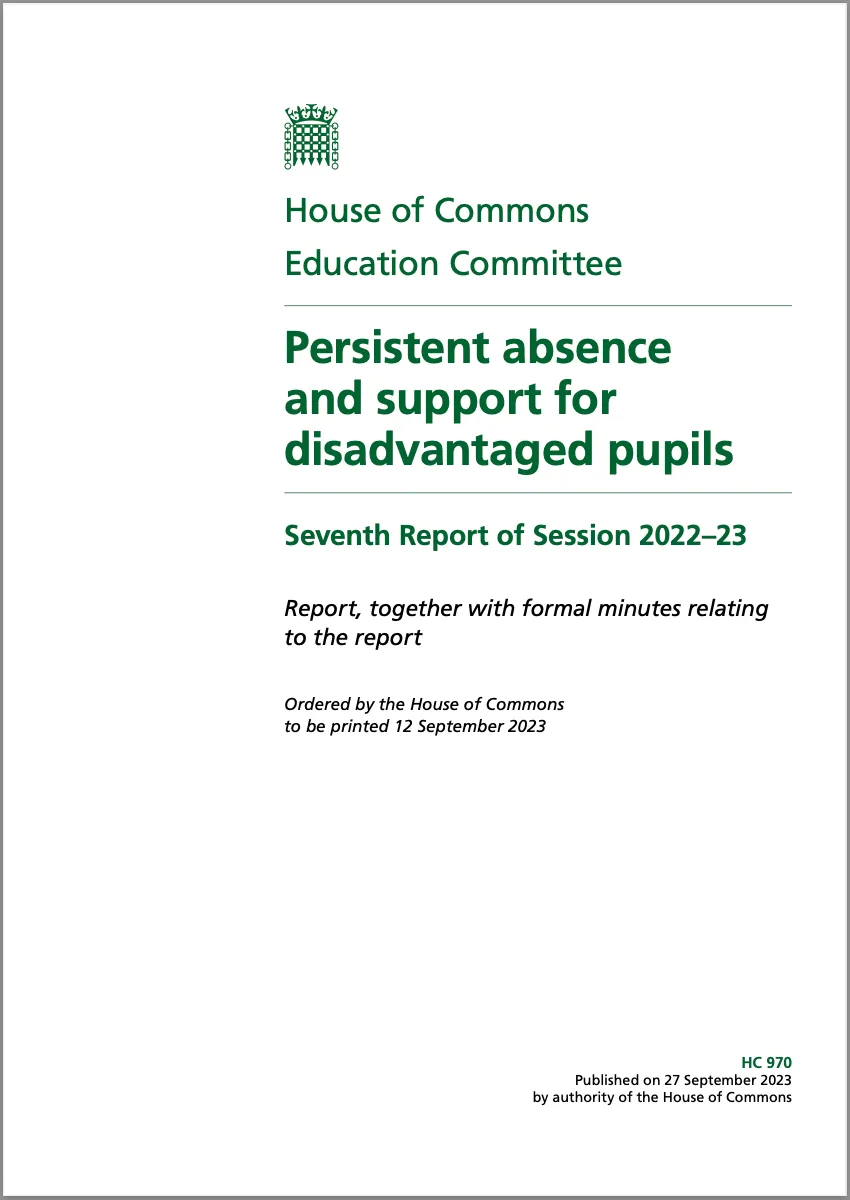
Government statistics have shown that covid-19 and its aftermath has had a damaging effect on school attendance, which has lasted longer than originally anticipated, so we decided to investigate the causes and possible solutions to the growing issue of children’s absence from school. We launched our inquiry into Persistent absence and support for disadvantaged pupils in January 2023.
The rate of absence in schools in England has increased significantly since the pandemic. The most recent full-year statistics (which cover the 2021/22 academic year) showed an overall absence rate of 7.6%, up from around 4–5% pre-pandemic. Within this, 5.5% of missed sessions were authorised absences and 2.1% were unauthorised. Authorised illness was the main driver, at 4.4%, (whilst unauthorised holiday absences sat at 0.4%). 22.5% of pupils were persistently absent, which is around double the pre-pandemic rate, and 1.7% of all pupils were severely absent compared to less than 1% pre-pandemic.
Prior to the impact of the pandemic, absence and persistent absence had been gradually declining since 2010, but there is no sign of a return to this trajectory. Given the time that was lost to education during the pandemic, it is of great concern that absence rates have not returned to pre-pandemic levels, and there has been no significant improvement in the speed and scale of rate reduction which is needed to prevent long-term harm to pupils.